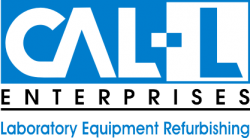With a price tag of $1 million, many schools can’t afford the latest spectrometry equipment to help students conduct experiments, like determining the composition of a polymer or detecting the presence of cocaine in a hair sample. But that may soon change, thanks to the first virtual mass spectrometry system—an interactive, Web-based educational device developed by researchers at Carnegie Mellon and the University of Pittsburgh.
Dubbed the Virtual Mass Spectrometry Laboratory (VMSL), this educational tool has the potential to enable thousands of students and researchers to learn how to solve real problems from different scientific disciplines without bearing the burden of expensive equipment.
“The development of this system will allow us to educate many more undergraduate students at one time in challenging technologies that are increasingly essential for conducting much of today’s research,” says Mark Bier, director of Carnegie Mellon’s Center for Molecular Analysis.
“Since the VMSL is carefully designed to allow students great freedom with no risks, we believe it will engage them via the discovery process in a way traditional course experiments rarely can,” said Joseph Grabowski, professor of chemistry at the University of Pittsburgh.
According to Bier, only one or two students can use an actual mass spectrometer at one time, and then only if faculty members are not using the equipment exclusively for their studies. VMSL allows more students to learn at the same time without interrupting ongoing faculty research. Smaller colleges that can’t afford the instrumentation could also use the VMSL to introduce their science students to mass spectrometers and cross-disciplinary case studies.
The VMSL experiments also are completed quickly (in about three hours), while a typical protein identification analysis performed in the actual laboratory might take two or more days to finish. Because the computer requirements for logging onto VMSL are minimal, virtually anyone with Internet access can navigate the site.
The VMSL system incorporates four different kinds of mass spectrometers: matrix-assisted laser desorption ionization time-of-flight (MALDI-TOF), gas chromatograph quadrupole, electrospray ionization ion trap and magnetic sector. Each spectrometer is used to study the composition of compounds, like proteins, polymers or small molecules, based on their molecular weight and electric charge.
Students use one of three VMSL servers—two housed at Carnegie Mellon and one at the University of Pittsburgh—to connect to data files stored from the mass spectrometers. Once a user gains access to the VMSL, he or she selects one of the four case studies the lab offers. These include identification of a protein, analysis of an unknown anesthetic, detection of cocaine in a hair sample or determination of a polymer’s composition.
A student conducting an analysis first reads background information about the case then goes to the virtual lab to prepare the sample. In the protein case, for instance, the student must first virtually “digest” the protein to create smaller peptides that are introduced into one of the mass spectrometers for analysis.
After preparing the sample and introducing it into the mass spectrometer, the student sets the instrument controls and calibrates it using a known standard compound. The student then acquires the data in the form of a plot called a mass spectrum and interprets the data. Problems arise if a student fails to prepare a sample correctly, set the instrument controls properly or massage the dataset appropriately.
“Our system helps create a ‘real-life’ experience for students, not a recipe-driven experiment, as is typically encountered in an undergraduate laboratory,” Bier said. “Students may need to go back at any time along their work to modify a step so that they succeed in producing results that can be successfully analyzed and interpreted. One advantage over reality is that the program will correct you from making a bad sample early on. It will not allow you to spend hours of time before realizing that you made a mistake.”
“We also can use the VMSL to teach aspects of running spectroscopic instrumentation,” Bier said. In the case of the MALDI-TOF spectrometer, for instance, a peptide mixture can be acquired several times using a different number of “shots” from an ionizing laser beam. This results in a series of spectra that students can use to learn about signal averaging. Additionally, in any one optimized peptide mass spectrum, students can zoom into one set of spectral peaks and investigate the isotope composition of the molecular ion.
The VMSL runs rapidly on most computers, in part because a large 250-kilobyte spectrum is compressed into a one-to-five-kilobyte graphics interchange format (GIF) file before it’s transmitted from the server to the user’s computer. Hundreds of actual spectra are stored on the VMSL servers for each spectrometer, and any one can be converted into a GIF image and sent to an experimenter. No additional software is required to run VMSL other than a Web browser, a program to manipulate molecules in space (CHIME tutorial) and a program to run virtual lab movies (QuickTime, Microsoft Corp.). This user-friendly strategy allows programmers to update the VMSL for all users at once.
Students at Carnegie Mellon have been exposed to the VMSL in both a chemistry and biology class.
“Our next step is to expand the use of the VMSL in the classroom and evaluate its effectiveness in preparing students to use the real mass spectrometers to solve real problems,” Grabowski said.
The VMSL, which is funded by the National Science Foundation, can be accessed at http://mass-spec.chem.cmu.edu/VMSL/.
